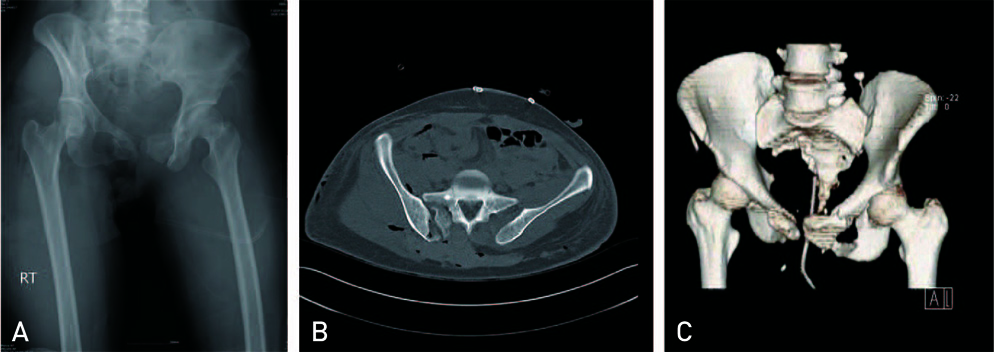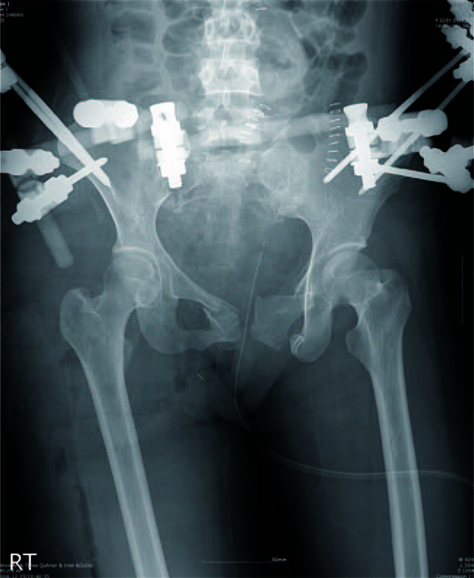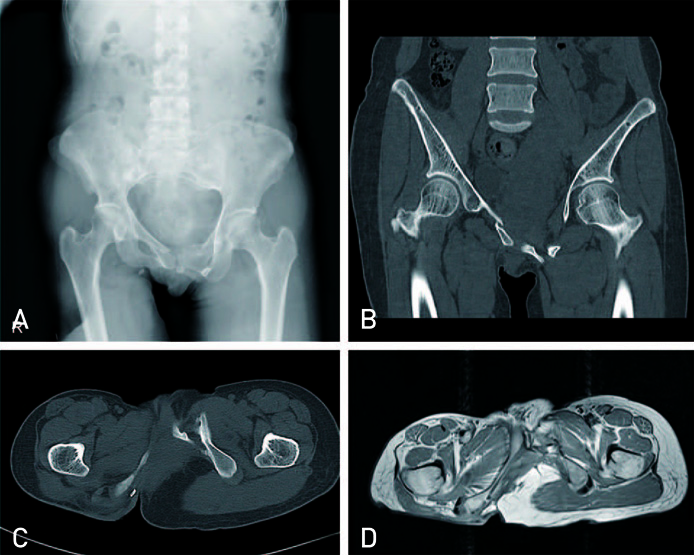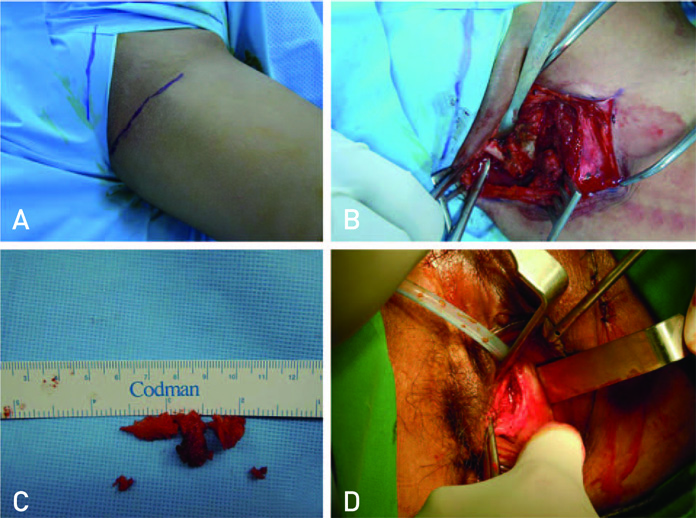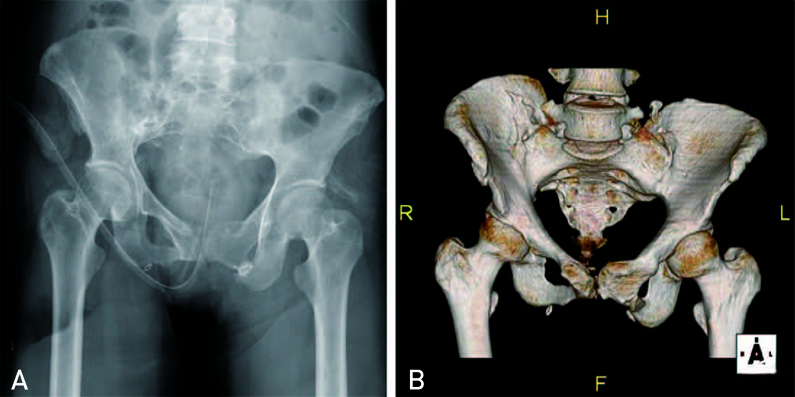Hip Pelvis.
2014 Mar;26(1):45-49. 10.5371/hp.2014.26.1.45.
Dyspareunia Caused by Pelvis Malunion
- Affiliations
-
- 1Department of Orthopedic Surgery, Daejeon St. Mary's Hospital, The Catholic University of Korea, College of Medicine, Daejeon, Korea. weonkim@hotmail.com
- KMID: 2054162
- DOI: http://doi.org/10.5371/hp.2014.26.1.45
Abstract
- In unstable pelvic ring injury, if there is damage to both the anterior and posterior, both anterior and posterior fixation will be needed in order to stabilze the pelvic ring. A female patient complained of dyspareunia due to malunion and additional bone bridge at the inferior ramus of the pelvis. She should have undergone both anterior and posterior fixation, but had undergone anterior fixation only. We report on a patient who was treated successfully with resection of additional bone bridge, scar tissue and adhesive band around the vagina.
Figure
Reference
-
1. Gänsslen A, Pohlemann T, Paul C, Lobenhoffer P, Tscherne H. Epidemiology of pelvic ring injuries. Injury. 1996; 27:Suppl 1. S-A13–S-A20.
Article2. Simonian PT, Routt ML Jr. Biomechanics of pelvic fixation. Orthop Clin North Am. 1997; 28:351–367.
Article3. Dujardin FH, Roussignol X, Hossenbaccus M, Thomine JM. Experimental study of the sacroiliac joint micromotion in pelvic disruption. J Orthop Trauma. 2002; 16:99–103.
Article4. Papadopoulos IN, Kanakaris N, Bonovas S, et al. Auditing 655 fatalities with pelvic fractures by autopsy as a basis to evaluate trauma care. J Am Coll Surg. 2006; 203:30–43.
Article5. Matewski D, Szymkowiak E, Bilinski P. Analysis of management of patients with multiple injuries of the locomotor system. Int Orthop. 2008; 32:753–758.
Article6. Riska EB, von Bonsdorf H, Hakkinen S, Jaroma H, Kiviluoto O, Paavilainen T. External fixation of unstable pelvic fractures. Int Orthop. 1979; 3:183–188.
Article7. Schweitzer G. Open reduction and internal fixation of vertical shear pelvic fractures. J Trauma. 1987; 27:1308.8. Kellam JF, McMurtry RY, Paley D, Tile M. The unstable pelvic fracture. Operative treatment. Orthop Clin North Am. 1987; 18:25–41.9. Berg EE, Chebuhar C, Bell RM. Pelvic trauma imaging: a blinded comparison of computed tomography and roentgenograms. J Trauma. 1996; 41:994–998.10. Vallier HA, Cureton BA, Schubeck D. Pregnancy outcomes after pelvic ring injury. J Orthop Trauma. 2012; 26:302–307.
Article
- Full Text Links
- Actions
-
Cited
- CITED
-
- Close
- Share
- Similar articles
-
- Surgical Treatment of Malunion and Nonunion after Pelvic Bone Fracture
- Surgical Correction of Pelvic Malunion and Nonunion
- Diagnosis and Treatment of Dyspareunia
- The effect of isoflavone on vaginal dryness and dyspareunia in postmenopausal symptoms: a systematic review and meta-analysis
- A Correction of Malunion or Deformity in the Lower Extremity

